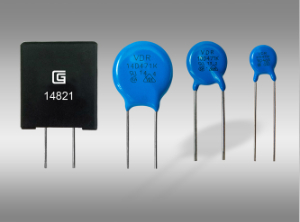-
Location:
- Home
- > news center > company news

The filtering function of the safety capacitor. In the power supply circuit, the rectifier circuit turns AC into pulsating DC, and a larger capacity electrolytic capacitor is connected after the rectifier circuit to use its charge and discharge characteristics to make the rectified pulsating DC voltage It becomes a relatively stable DC voltage. In practice, in order to prevent the power supply voltage of each part of the circuit from changing due to load changes, there are generally tens to hundreds of microfarads electrolytic capacitors connected to the output end of the power supply and the power input end of the load. Since large-capacity electrolytic capacitors generally have a certain inductance and cannot effectively filter out high-frequency and pulse interference signals, a capacitor with a capacity of 0.001--0.lμF is connected in parallel at both ends to filter out high-frequency And pulse interference.
Coupling: In the process of low-frequency signal transmission and amplification, capacitor coupling is often used to prevent the static operating points of the front and rear circuits from interacting with each other. In order to prevent excessive loss of low-frequency components in the rhyme of the signal, electrolytic capacitors with larger capacity are generally used.
The importance of capacitors When turbulent river water flows into the lake, and then let it flow out, it appears calm and soft. The capacitor should act as a lake. Make the current more pure and without clutter.
The so-called capacitor is an electronic component that accommodates and releases charge. The basic working principle of a capacitor is charging and discharging, and of course it also has rectification, oscillation and other functions. In addition, the structure of the capacitor is very simple, mainly composed of two positive and negative electrodes and an insulating medium sandwiched in between, so the type of capacitor is mainly determined by the electrode and the insulating medium. Several types of capacitors such as electrolytic capacitors, paper capacitors and ceramic capacitors are used in the circuit of the computer system's motherboard, card, and power supply, and electrolytic capacitors are the main ones.
The paper dielectric capacitor is composed of two layers of positive and negative tin foil electrodes and a layer of insulating wax paper sandwiched between the tin foil, and they are unfolded into a flat rectangle. The rated voltage is generally between 63V and 250V, and the capacity is small, basically in the order of pF (picofarad). Modern paper dielectric capacitors are not easy to age due to the use of hard plastic shells and resin sealed packaging, and because they basically work in low-voltage areas and have relatively high voltage resistance, they are less likely to be damaged. In case of electrical damage, the general symptom is heat on the capacitor surface.
Porcelain dielectric capacitors are formed by coating metal electrodes on both sides of a piece of porcelain, and are generally oblate. Its capacitance is small, all in the order of pμF (picofarad). And because the insulating medium is a thick ceramic piece, the rated voltage is generally about 1 to 3kV, which is difficult to be damaged by electricity, and generally only mechanical damage occurs. There are very few applications in computer systems, and there are only about 2 to 4 in each circuit board.
The structure of electrolytic capacitors is similar to that of paper dielectric capacitors. The difference is that the two metal foils used as electrodes are different (so there are positive and negative electrodes on the electrolytic capacitor, and generally only the negative electrode is marked). The two-electrode metal foil and paper medium are rolled into After being cylindrical, it is enclosed in a round aluminum bucket containing electrolyte. Therefore, if the capacitor leaks, it is easy to cause the electrolyte to heat up, resulting in bulging or bursting of the shell.
no information